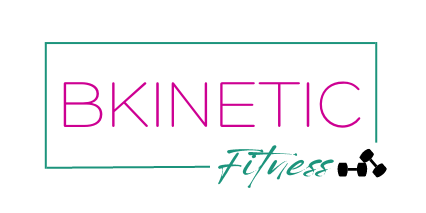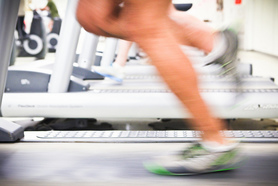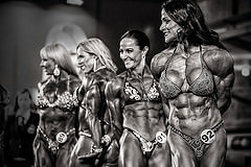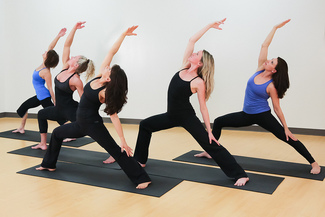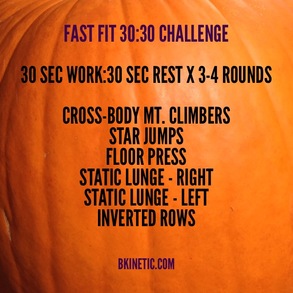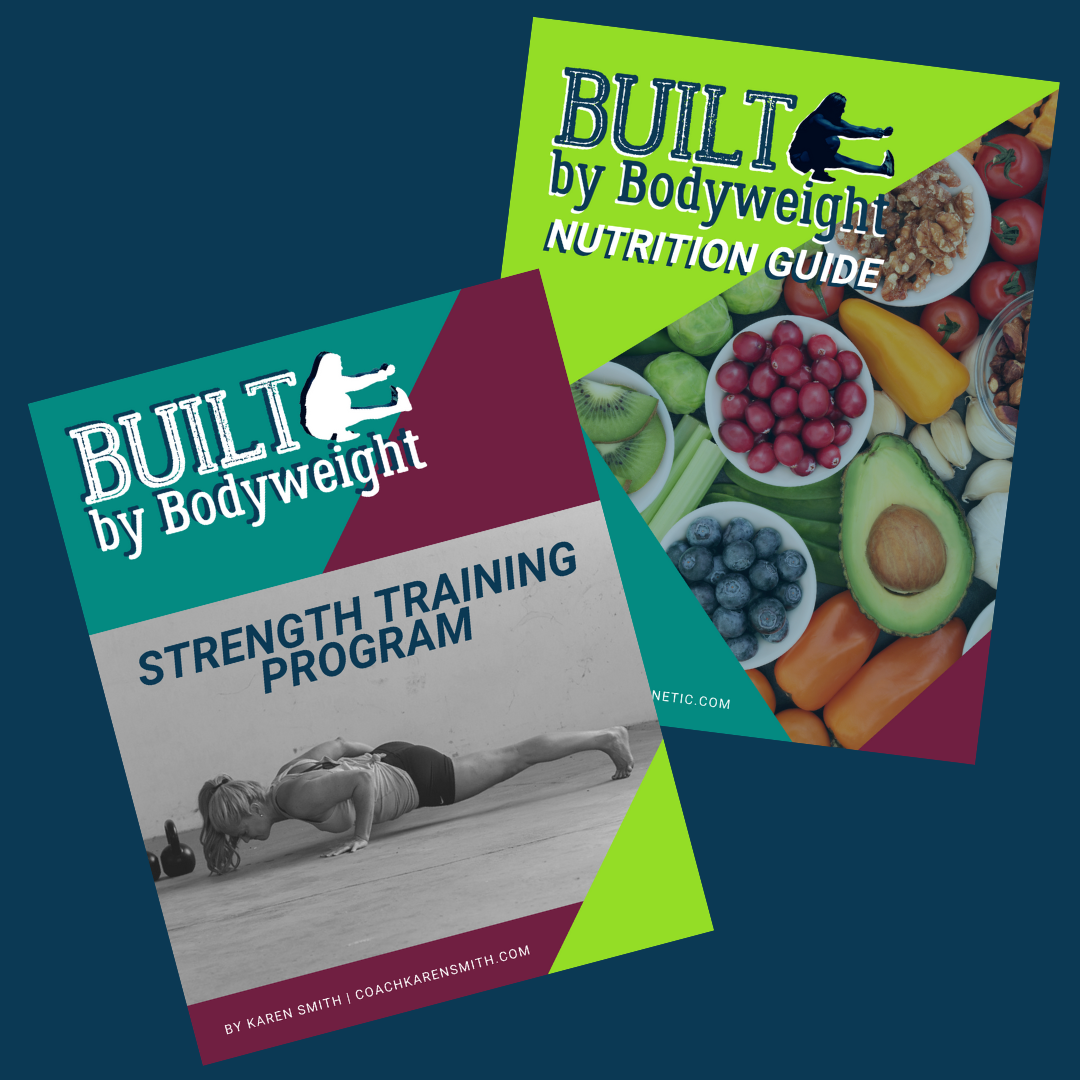I like to tell it like it is with my clients. I don’t believe in sugar-coating anything, especially if it only keeps someone struggling longer. And I’m constantly on the search for new information to keep my health and fitness knowledge up to snuff. I would rather find out that I’m wrong about something and be able to change direction than to be go along blissfully ignorant of the truth and slowing down my own or my clients’ progress and quality of life.
“If anyone can refute me—show me I’m making a mistake or looking at things from the wrong perspective—I’ll gladly change. It’s the truth I’m after, and the truth never harmed anyone. What harms us is to persist in self-deceit and ignorance.”
— Marcus Aurelius
There is so much misinformation out there, in magazines, books, and online about fat loss and fitness. Everyone has their own spin on things and their own biases, me included. And in order
to sell magazines, books, DVDs, reality tv shows, and programs, there must be something different and even controversial about the approach.
But this just leaves us all struggling! We get so overwhelmed and confused by the barrage of information and so-called “conventional wisdom” that it makes our heads spin. We jump from program to program, diet to diet, just spinning our wheels and getting nowhere fast. This isn’t good for anyone.
What gets me fired up about this industry is how many are willing to push their approach on everyone, regardless of the actually efficacy or evidence backing it. And regardless of the client’s goals, history, preferences, lifestyle, and limitations.
I get annoyed when fitness models and competitors push their sponsor’s supplements on their followers without having done their homework on the safety and efficacy of said supplement. Instead of encouraging their followers to do their own research, they flaunt their ripped bodies on social media with the claim that “it works for me!” And don’t even get me started on the people who compete once or twice and all of a sudden feel qualified to be shilling meal plans and training programs on Instagram.
Thud, thud, thud. That’s the sound my head is making against the wall right now.
My overriding mission is to educate women so that they can see right through these claims and ineffective strategies so that they can figure out what is going to work for them, without all the hype and unrealistic promises. Without needlessly struggling and feeling like a failure.
When we are empowered with the right information and the means to execute, we can accomplish big things, and on our own terms. So save yourself some time, frustration, and money by reading about the first 4 fat loss beliefs that are actually complete bullshit:
Fat Loss Myth #1: Copious amounts of cardio are required to lose fat.
I used to think that I had to do a minimum of 45 minutes to an hour of moderate to intense cardio 6 days a week in order to stay in shape and lose weight. Maybe it was the fluff fitness magazines I used to read or maybe it was a lifetime of soccer training influencing that.
Don’t get me wrong, I used to enjoy hopping on the treadmill and banging out a few miles. I was so into running that I ran at least 3-5 days a week and ran 5ks, 10ks, and half-marathons 2-4 times a month year-round. Not every minute was a blissful runner’s high, but I thought that was what I needed to do to get and stay lean, and I loved the sweaty sense of accomplishment that came after even the shittiest workout.
But that “more, more, more” mentality is a cornerstone of the mainstream fitness media, as well as social media. The hashtag #BeastMode brings up over 10.5 million recent posts on Instagram alone. :-O We watch reality tv shows like The Biggest Loser and Extreme Makeover: Weight Loss Edition and think that we have to work out a minimum of 2 hours a day (or even more if we have more weight to lose). This is simply not true. In both cases, the contestants are trying to lose the most weight in the shortest time possible. Which, admittedly is what we would like to do as well, but it’s just not realistic for most of us.
The thing is, the vast majority of these contestants gain most if not all of the weight back (sometimes more). The methods through which they lost the weight were not the healthiest nor the most sustainable. And if you can’t continue your routine for the rest of your life, you’re simply not going to be able to maintain your results. What you do to lose the weight is what will keep the weight off.
Furthermore, the body is constantly seeking homeostasis. If you jack up your activity, especially with moderate to high intensity cardio, it will jack up your cravings and appetite in response. And sheer willpower won’t always be able to quell the urge to overeat. And your body will adapt to the volume of exercise that you do, and thus burn fewer calories. But there is only so much exercise that you can do before it starts to be counterproductive and interferes with your recovery and lifestyle.
So the key is to be conservative with your cardio and only use it as necessary to see results. It is simply one tool out of many for fat loss, and certainly not the most important one. As with anything, program your cardio according to your goals. If your priority is losing fat, do as little as possible to see results. But if your main goal is to do a 10k or a half-marathon, then by all means do as much as your training plan calls for to accomplish that mission.
But in both cases, more isn’t always better.
Want to lean and strong in just 3 days a week? Get Built By Bodyweight, the new bodyweight strength training and fat loss program by Karen Smith and myself. Get your copy here >>> builtbybodyweightprogram.com
Fat Loss Myth #2: Lifting weights makes women bulky, like bodybuilders.
We can thank the mainstream media and celebrities like Tracy Anderson and Gwyneth Paltrow for keeping this misconception alive and well. Anderson and her protege Paltrow maintain that lifting more than 3# will make women “bulky.” Never mind that every woman I know carries a purse more than three times that heavy on a daily basis, not to mention picking up heavy grocery bags, their children, pets, boxes of kitty litter and bags of dog food, and backpacks full of heavy textbooks.
But it’s easy to see how many women can get confused on this point. More and more, we are exposed to images of elite athletes and fitness competitors who may indeed look somewhat “bulky” in some women’s eyes. We think that that’s how we’ll look if we hit the weights hard. But what is often glossed over or ignored completely is the fact that building muscle is hard effing work, especially if you have an ectomorphic body type (naturally very slim) or have been lifting for a longer than a year. The women in the picture above have been lifting for years and eating a very specific diet to get those bodies. Those physiques don’t happen by accident, and they certainly aren’t built overnight.
The expected typical muscle gain for newbies or those who have been away from the weight room for quite a while is only 0.5-1 pound per month for females, but only for the first 6 months or so. This amount is also affected by other factors, such as genetics, diet, training program, previous training history, sleep quality, and more.
As time goes on though, muscle takes more work and time to build. A female’s rate of growth slows down to 0.5# per month from month 6 to 12, 0.3-0.4# per month during the second year of training,
and then drops to a measly 0.1-0.2# per month after three or four years of serious training. This is agonizingly slow for the experienced lifter!
So don’t be fooled into thinking that by lifting 2-4 times a week that you’ll blow up overnight into the next Ronda Rousey or Nicole Wilkins. It just doesn’t happen that way. And keep in mind that some pro bodybuilders use steroids and other performance-enhancing drugs. Not all, of course, but some. And when you see these competitors and models on stage and in magazines, they’ve been through a deliberate period of dehydration, carb and sodium manipulation, and are tanned within an inch of their lives. You are seeing them at their absolute peak of leanness and muscularity. They don’t typically look exactly like that in the offseason.
You may feel like you tend to get bulky when lifting weights, but that can usually be attributed to a multitude of factors, including gaining or maintaining fat through a surplus of calories, too high volume of exercise, increased glycogen storage from training, water retention, and “newbie gains” from repeatedly starting and stopping training over the years. Sure, certain body types do have an easier time building muscle (and/or gaining fat) than others, but the true outliers still have a pretty difficult time building a significant amount of muscle.
Do I look bulky to you?
Fat Loss Myth #3. Yoga, Pilates, and the Barre Method build long, lean muscles.
This myth has been around for a long time and is continually reinforced everyday in magazines and online. While the more strenuous forms of yoga and pilates can build muscle (to a very small degree in newbies), muscle is muscle. It isn’t bulky or long and lean. It’s the same regardless of your activity. It’s the amount of muscle and its density that dictates what it’ll look like on your body, not to mention your genetics. The same amount of added muscle, say 10#, looks very different on someone short like me (5-foot-zero) versus someone who is 5’8″. It will be more noticeable on me, since it covers a more compact area. Heck, my training partner Karen is only 3 inches taller than me, and our bodies and muscles look very different.
And our genetics also have a big say in where we build muscle easiest — for me, it’s my quads and arms — as well as the length of our limbs and the differences in the muscles’ origin and insertion points. You just can’t change the length of your muscles. To do so, you’d have to change their origin and insertion points, which could only be done through surgery.
Sure, the muscles and overall body shape of someone who does mostly yoga or pilates may seem “long and lean,” but it’s usually because either A) that’s their natural body type (people tend to gravitate toward things they’re good at and certain body types are better at some activities than others) or B) because of their body composition (ratio of muscle vs. fat).
It’s easy to eat according to our activities and appetite and not realize that we’re eating more or less than normal. Strenuous activities such as running and lifting can increase appetite, leading to eating more and gaining muscle and/or fat, and making us feel like we’ve gotten bulky.
There are a lot of variables involved when it comes to how your body looks:
* Diet (including macronutrient breakdown and quality of food intake)
* Activity level (frequency, volume, intensity)
* Recovery (including sleep, stress management, and periodization)
* Types of activities (including activities of daily living and non-exercise movement or lackthereof)
* Genetics (body type — endomorph, ectomorth, mesomorph)
* Exercise and medical history, and more.
Again, it all comes down to volume as well (volume = weight x reps x sets). Lifting heavy weights 5-6 days a week for 90 minutes a pop will lead to a very different body than lifting moderate to heavy 3 days a week for 30-45 minutes, as will just hitting a power yoga class 2-3 days a week (and using only bodyweight). There’s more than one way to lift heavy weights. The beauty is that you can design your program in a variety of ways to fit your schedule, goals, body, and desired results. It isn’t an either/or game.
Fat Loss Myth #4: If you can’t work out for 90 minutes to 2 hours a day, it doesn’t really count.
False! You can get an effective workout in as little as 20-30 minutes a day, a few times a week, provided that your diet is on point. Everyone is different, but the vast majority of people can get away with a moderate approach to exercise.
Intensity is the driver of results here. If you can go hard for 20-30 minutes with limited rest, believe me, you’ll get a great workout in. You’ll be breathing hard, your heart rate will shoot through the roof, and you’ll be dripping in sweat. Add in a few leisure walks and non-exercise activity throughout the day, and you’re golden.
I have a ton of Fast Fit workouts that take 30 minutes or less on Instagram and on this website here to get you started.
Ready to get STRONG and LEAN?
Built By Bodyweight, the strength training and nutrition program I co-created with StrongFirst Master Instructor Karen Smith, is now on sale!
Karen designed a 12-week bodyweight program that will build your strength, confidence, and fitness in just 3 workouts a week. I wrote the nutrition program that features everything from food intake, hormones, stress, sleep, habits, mindset, and much more! It’s everything that I teach my 1:1 coaching clients for a fraction of the price. Plus, we provide ongoing coaching in a private FB group!
Get it here >>> builtbybodyweightprogram.com
